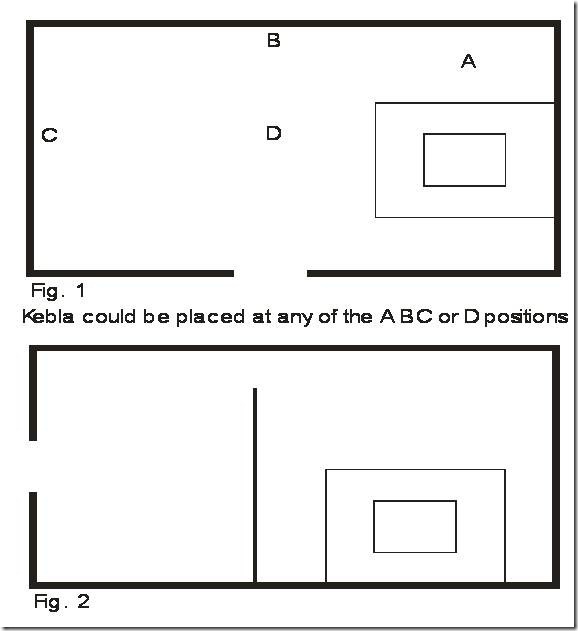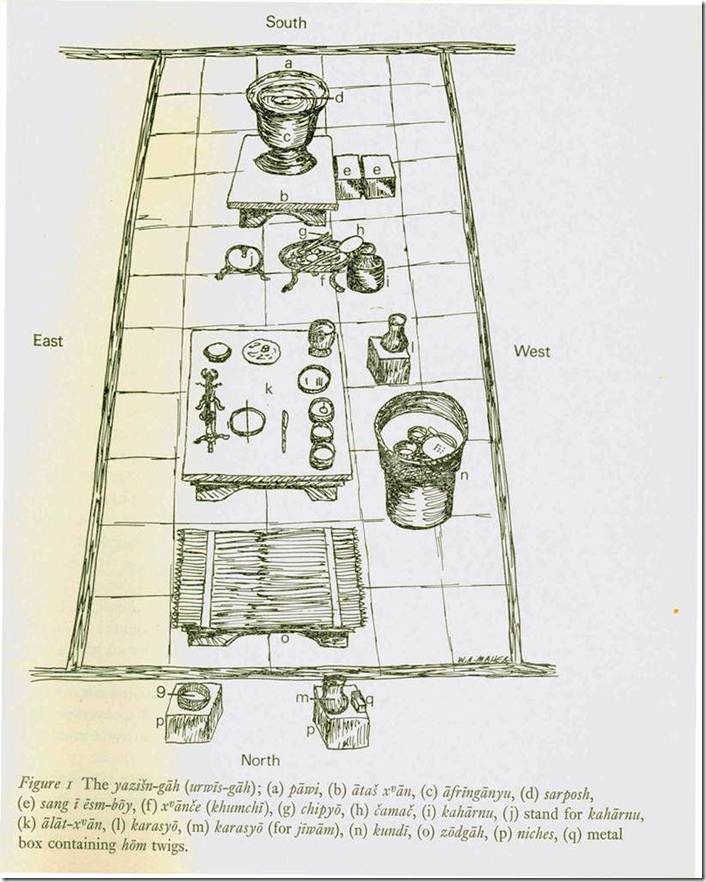Atashkadeh in North America: A Paper by the North American Mobeds Council
Date
June 10, 2012
Post by
Category
At the request of many FEZANA Associations, NAMC have been working on a paper:
Atashkadeh in North America which gives guidelines for constructing an Atashkadeh (Dar-e-Maher, Agiary, etc.) in North America. NAMC have spent a number of hours with the help of a number of NAMC Mobeds and with the guidance from a number of Dasturjis and Scholars to come up with a Paper for this very important subject for all of us in North America.
On behalf of our esteemed President Ervad Kobad Zarolia and all his NAMC Executives, it is our distinct pleasure to share this attached paper with you all! We hope that this paper will be a good guideline to all of us in North America for our existing as well as future Atashkadehs.
We will be very much interested in getting your thoughts and feedback on this paper.
May the Flame of Fellowship, Love, Charity and Tolerance burn ever eternal in our hearts so we can do HIS work with with humility, tolerance, diligence and eternal enthusiasm!
Atha Jamyaat, Yatha Aafrinaamahi! (May it be so as we wish!)
On Behalf of the entire NAMC Mobeds,
Love and Tandoorasti, Soli
Paper published by North American Mobeds Council (May 2012)
“Atashkadeh in North America”
Introduction
A significant number of Zoroastrians now call North America (primarily Canada and the United States of America) their home. Though they have embarked on new lives in new environment, they have made every effort to preserve and protect their religion and heritage. The North American concept of “freedom of speech, religion and assembly” has created ideal conditions to practice Zoroastrianism and preserve its heritage.
Parsis, Irani Zoroastrians and Zoroastrians originating from other parts of the world have united themselves in North America under the banner of “Zoroastrian”, and have formed regional Zoroastrian Associations with a view to preserve and promote Zoroastrianism.
The Zoroastrian population in North America has now reached a critical mass to establish their own places of worship in various cities throughout North America. The various associations have committed significant resources to purchase properties with the intention of building Zoroastrian places of worship.
The North American Mobed Council (NAMC), in its capacity as the advisory body on Zoroastrianism in North America, have been approached to provide instructions and guidance in setting up Zoroastrian places of worship, suitable to the North American environment.
This paper is restricted to the establishment of Atashkadeh (with a Dadgah fire) in North America; with provisions for setup for rituals like Yazashne, Visparad and Vendidad. Procedures and methods of performing these rituals in the North American setting are to be established in the future by NAMC after discussions and advice from Mobeds and Zoroastrian scholars of the time.
NAMC recognizes that the views and practices of the present generation of Mobeds are influenced by their emotional ties to traditions practiced during their training, upbringing and initiation in their home countries; resulting in a strong desire to maintain such views and practices. NAMC acknowledges that the future generation of Mobeds will be open to new and bold initiatives and will be amenable to forge new traditions and practices that would conform to their generation. Mobeds of that generation will be challenged to balance our traditions and their new initiatives. They will be compelled to explore creative solutions for the requirements of
– consecration and use of Alat
– source and use of water, pomegranate and date palm leaves, Nirang and
goat milk
– disposal of consecrated water and other items. and
– availability of Mobeds to administer and maintain Bareshnum
Therefore, NAMC recommends that at this time, an Atashkadeh in North America be established with sufficient flexibility to allow future Mobeds to upgrade the fire as and when circumstances may justly warrant.
This publication is produced for use by various North American Zoroastrian Associations as they fulfill their members’ religious and cultural needs by constructing or expanding their places of worship.
May 2012
Name of Zoroastrian place of worship:
Zoroastrians have traveled far and wide in search of business or employment opportunities while maintaining their religion and culture.
As Zoroastrians spread out in various parts of the globe, they have expressed their devotion to their faith and culture by establishing places of worship wherever they settled.
These places of worship came to be known by different names; most popular amongst them being “Fire Temple”, “Agyari” (Place of Agni or fire), “Dar-e-Meher” (Door of Mithra) and “Atashkadeh” (Place of Fire).
The structures described above are built to serve the fire that resides in it. Name of Fire Temple describe the physical structure of the temple. The Fire within the structure is described by the type of fire.
(e.g. an “Agyari”, “Dar-e-Meher” or “Atashkadeh” (being the structure) contain an “Atash Behram”, “ Atash Adaran” or “Atash Dadgah” (type of fire housed in the structure).
In keeping with our Zoroastrian heritage and to appropriately describe the structure, it is NAMC’s view that a Zoroastrian place of worship in North America be commonly known as “Atashkadeh”
Category of Fire:
Modern day Zoroastrians pray in the presence of three categories of Fire:
Atash Dadgah
The
Atash Dadgah is the basic grade of sacred fire. It can be either a perpetually burning fire or allowed to be extinguished and relit when necessary. It does not require periodic Boi ceremony. A Mobed (in absence of a Mobed, a Mobedyar and in absence of a Mobedyar, a lay Zoroastrian) can tend the fire in the Atash Dadgah.
Atash Adaran
Atash Adaran, the "Fire of fires" is the middle grade of fire. It requires a gathering of hearth fires from representatives of the four professional groups: the priests
(athornan), the soldiers
(ratheshtaran), the farmers or herdsmen
(vastryoshan) and the artisans (
hutokhshan). This procedure takes about three weeks. Atash Adaran is a continuously burning fire and needs to be attended five times a day by a Boi ceremony performed by a Mobed.
Atash Behram
Atash Behram, "Fire of victory" is the highest grade of fire. It involves gathering of fires from 16 different sources, including lightning and cremation pyre. This procedure could take up to about a year.
To comply with the current conditions, NAMC recommends that “Atash Dadgah” be established in North America at the present time, with a view to upgrade it to Atash Adaran when circumstances permit and new traditions and practices facilitate such an upgrade under the guidance and supervision of Mobeds of that time.
ATASHKADEH Structure:
Architecture:
Zoroastrian fire temples of yester years were magnificent edifices, worthy of pride in their architecture and for the communities that constructed them. The surviving structures are a testament to such magnificence.
NAMC believes that an Ataskadeh should be a magnificent structure. It should be an edifice worthy of the sacred fire that it houses.
To maintain security of the structure, to prevent flooding and to preserve ritual purity, the entire Atashkadeh structure should be elevated by about 3 feet from the adjoining normal ground level.
Use and capacity of ATASHKADEH:
Entry and use of an Atashkadeh should be open to those who adhere to the Zoroastrian customs and requirements of purity, Paadyaab and covering their heads while in the Atashkadeh.
To maintain ritual purity and to distinguish from other buildings, the ATASHKADEH should be a stand alone structure; distinctly separate from a community centre, banquet hall, gymnasium or any other utility building.
The occupancy capacity of the Congregation Hall should reflect the size of the Zoroastrian community in the vicinity and the affordability of the association.
Direction:
It is a Zoroastrian tradition to refrain from facing northern direction while reciting prayers. Ahura Mazda’s valued creations of water and vegetation are said to reside in the southern direction. Since our ancestors lived in the northern hemisphere, it is likely that they believed that the strong winds, snow and severe weather originated from the north, and therefore, not to turn towards that direction while praying to Ahura Mazda and His creations. In keeping with this tradition, the main entrance to the Atashkadeh should not face north.
As the sun rises in the east and provides a source of light throughout the day, and that most of the religious ceremonies are performed in the morning hours of the day, it is preferable that an Atashkadeh entrance face the east.
Though it is recognized that various fire temples throughout the world face in different directions, NAMC feels it be preferable for the Atashkadeh entrance to face east.
Segments of ATASHKADEH:
Paadyaab Kushti Area
Zoroastrian tradition enjoins visitors to perform Paadyaab Kushti before entering the main body of an Atashkadeh. Paadyaab is the process of cleaning the exposed parts of the body for physical purity. This is followed by a Kushti prayer facing the direction of the sun during the day and source of light during the night.
Adjacent to the entrance, a separate area for men and women should be set aside for Paadyaab Kushti, where facilities be made available to visitors to hang their coats, store their shoes, and cleanse exposed areas of their body. Prayer caps and scarves should be provided in this area.



 General
General




































